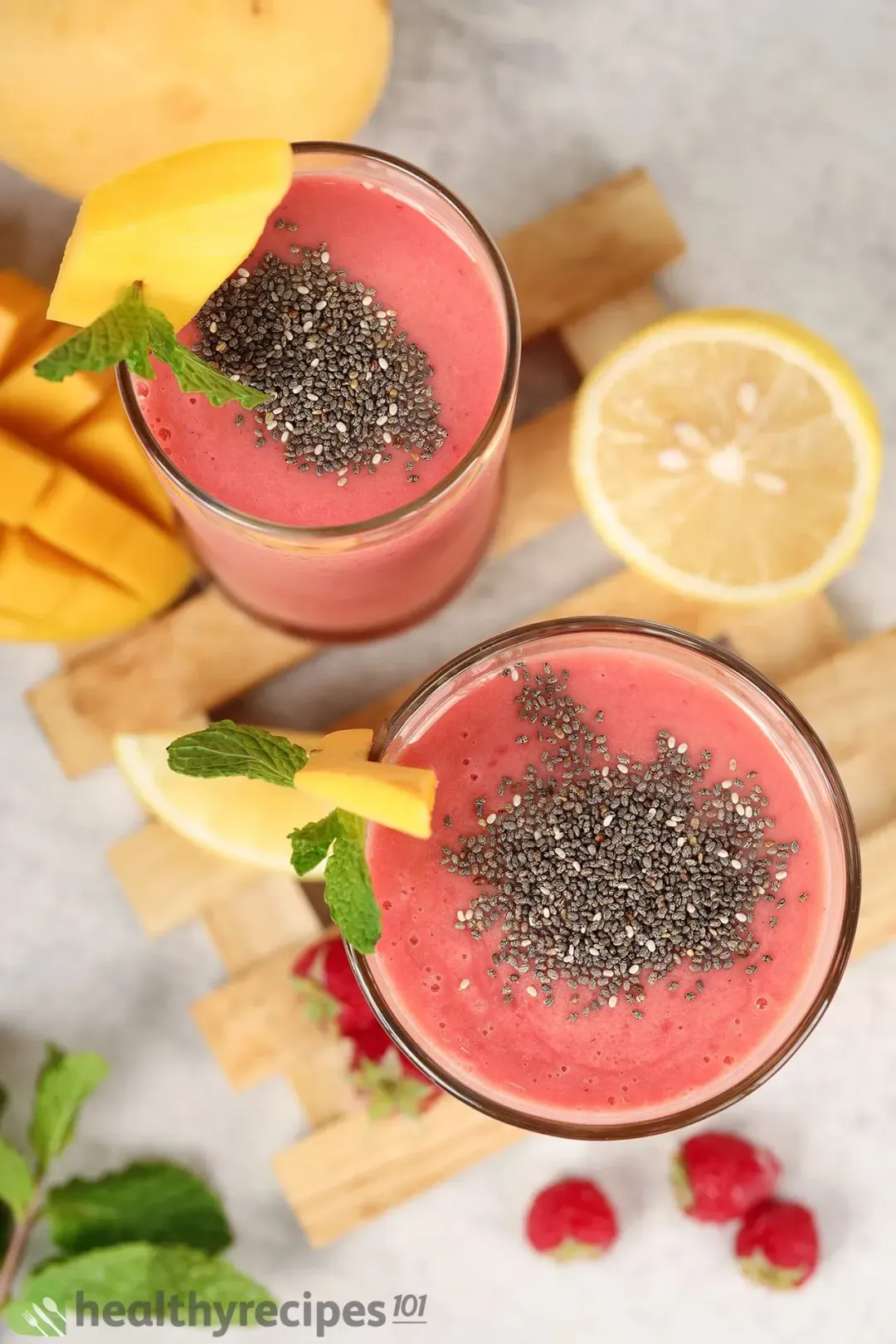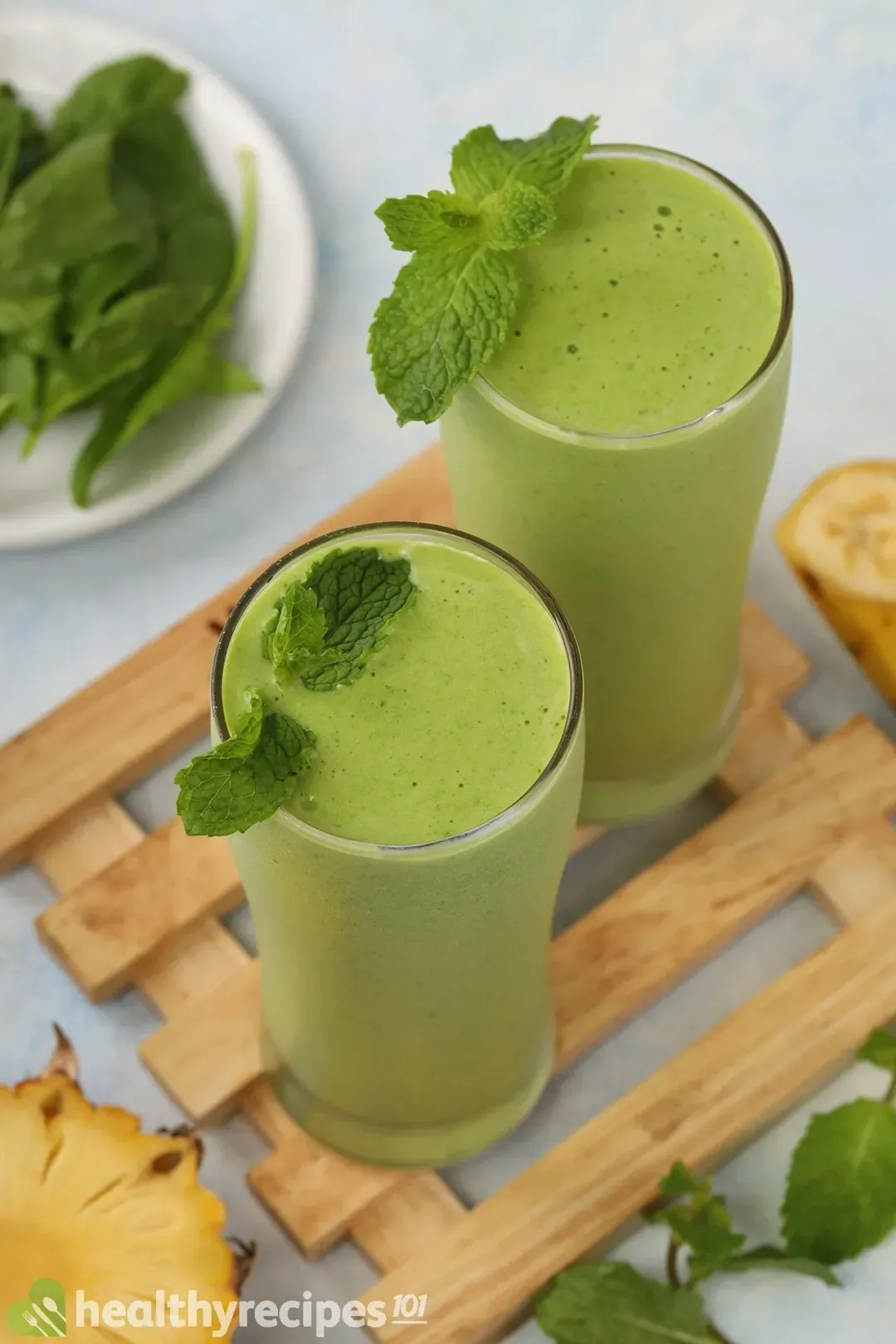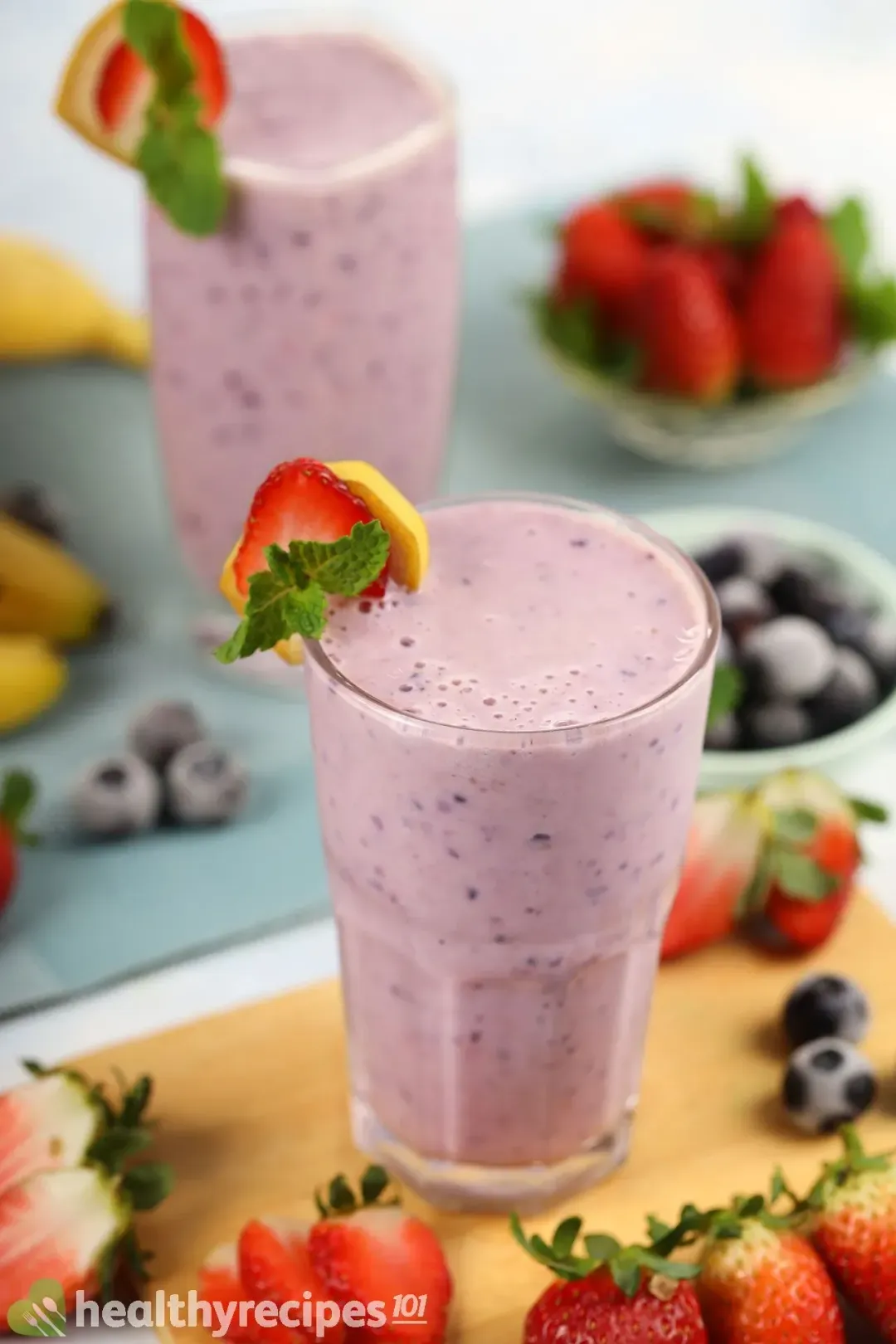Today’s mango raspberry smoothie recipe will give you a healthy and delicious drink to fend off the summer heat. As the name suggests, raspberries and mangoes are going to be the co-stars of today’s recipe.
In case you’re one of those folks who doesn’t have much experience with raspberries, here are some interesting facts about them.
What Does Raspberry Taste Like?
Like blackberries and strawberries, raspberries are small, edible fruits that, botanically speaking, are not “true berries”.
You can find raspberries in various different colors; don’t be surprised to see pinkish red, deep red, purple, black, and sometimes even golden yellow. No matter the color, though, they tend to have a pleasantly sweet-and-sour flavor.
Raspberries have floral, rosy notes that compliment their sweetness and mellow the sour taste. This is what distinguishes raspberries from their cousin from the same genus — blackberries.
Compared to strawberries, raspberries are smaller and more tart in terms of flavor. Strawberries don’t have that sour undertone, instead tasting and smelling sweeter.
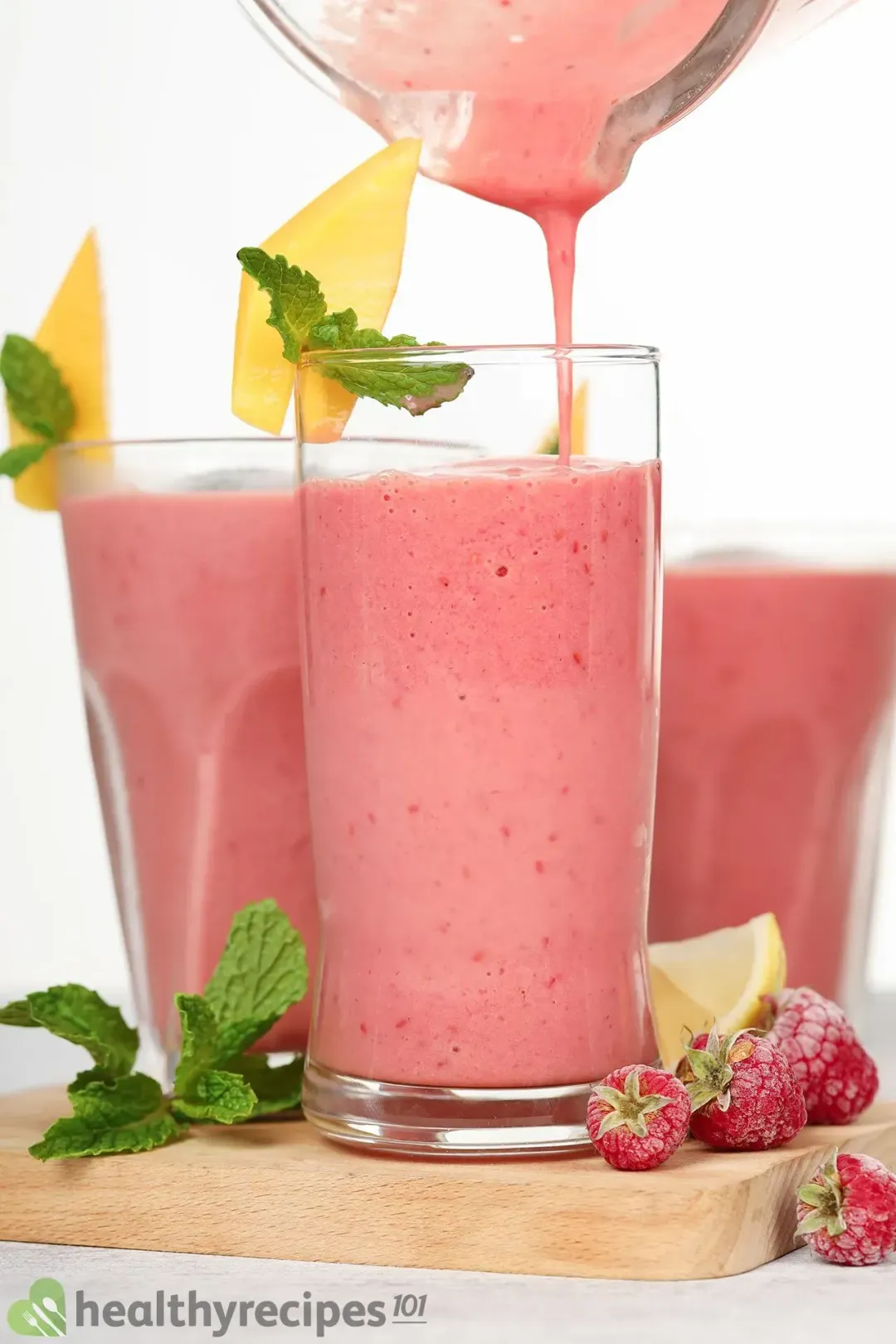
Is Mango Raspberry Smoothie Healthy?
Like the majority of our recipes, this mango raspberry smoothie recipe is a healthy one. Here are a few reasons why:
- Mangoes
Mangoes are tropical fruit that come in a wide variety of colors, shapes, flavors, and seed sizes. While the mango’s peel may be green, red, yellow, or orange in color, the flesh is typically golden yellow. In addition to raspberry, it also pairs splendidly with various other fruits, such as strawberry, avocado, papaya, and watermelon.
Consuming mangoes can benefit you in a number of ways. For starters, mangoes are rich in minerals, antioxidants, and vitamins — especially vitamin C.
Vitamin C strengthens the immune system and boosts the body’s capacity to repair itself. It’s thus critical to get the proper daily intake.
Additionally, the fruit is a good source of vitamin A, potassium, and vitamin B6 — all important nutrients that help the body function properly.
- Raspberries
After experimenting with a few smoothie recipes, such as Raspberry Smoothie and Raspberry Banana Smoothie, we have no doubt in mind how amazing raspberries are. Not only are they delicious, raspberries also give you quite a number of health benefits including micronutrients that may help reduce the risk of some diseases.
In addition, even though raspberries are sweet, they may benefit your weight loss scheme because they are low in calories.
Besides mangoes and raspberries, we also sneaked in a tablespoon of chia seeds to give this smoothie an extra boost in fiber.
Ingredients You'll Need
Today’s mango raspberry smoothie recipe contains:
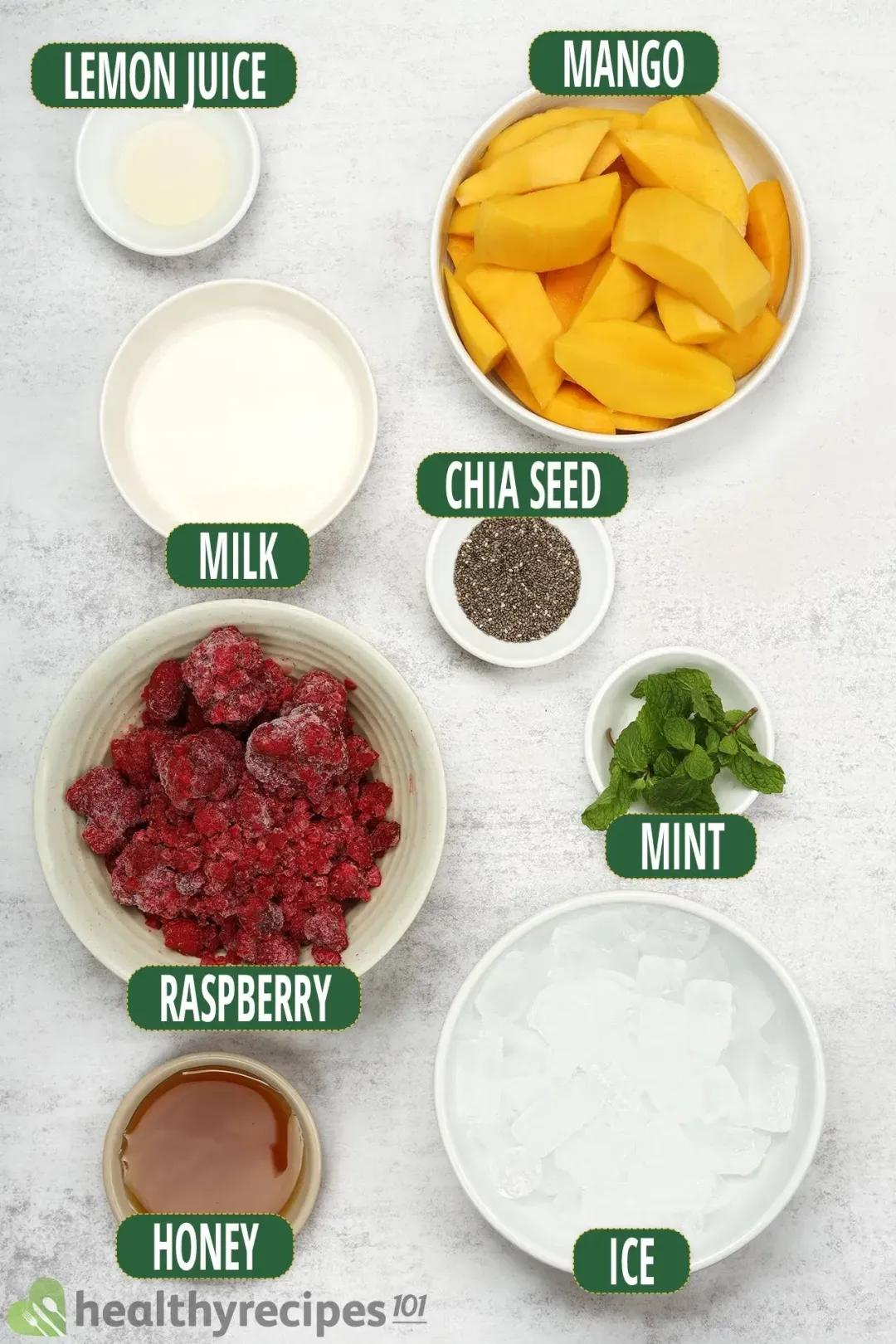
- Mangoes: You can use any variety of mangoes you can find, as long as they are ripe. Ripe mangoes will blend easily and lend the final product a naturally sweet flavor.
- Raspberries: We used frozen raspberries because blending frozen fruits will make your smoothie thicker and keep it cool longer.
- Lemon juice: Since both raspberries and mangoes are sweet, we decided it would be nice to add lemon juice to balance the flavor. It also adds a fresh citrus taste.
- Honey: We added only a touch of honey to round out the flavors.
- Whole milk: Whole milk will make your smoothie taste like a milkshake. If you need to avoid milk, we’ll give you a few recommendations for dairy substitutes later.
- Chia seeds: These highly nutritious seeds will help thicken your smoothie.
- Spearmint: We added a few sprigs of mint into the blender to give the smoothie a hint of that nice fresh scent. If you don’t have any mint, you can leave it out — there’s no need to buy a bouquet of mint just for one recipe.
- Ice: Softer types like nugget ice are ideal for smoothies.
Substitutes for Milk
As promised, here are a few ingredients you can use instead of dairy milk:
- Nut milk: Almond, cashew, macadamia, etc. You can use any type of nut milk you like for this recipe.
- Coconut milk: Coconuts are not actually nuts and coconut milk is not nut milk.
- Oat milk: This is another great dairy substitute. Oat milk has a rich and nutty flavor that can go well in a smoothie.
Storing and Freezing the Leftover Smoothie Mix
Smoothies typically keep for two days in the refrigerator. Today’s mango raspberry smoothie, however, may not survive that long.
Besides fresh fruits, our smoothie also contains whole milk — a highly perishable ingredient.
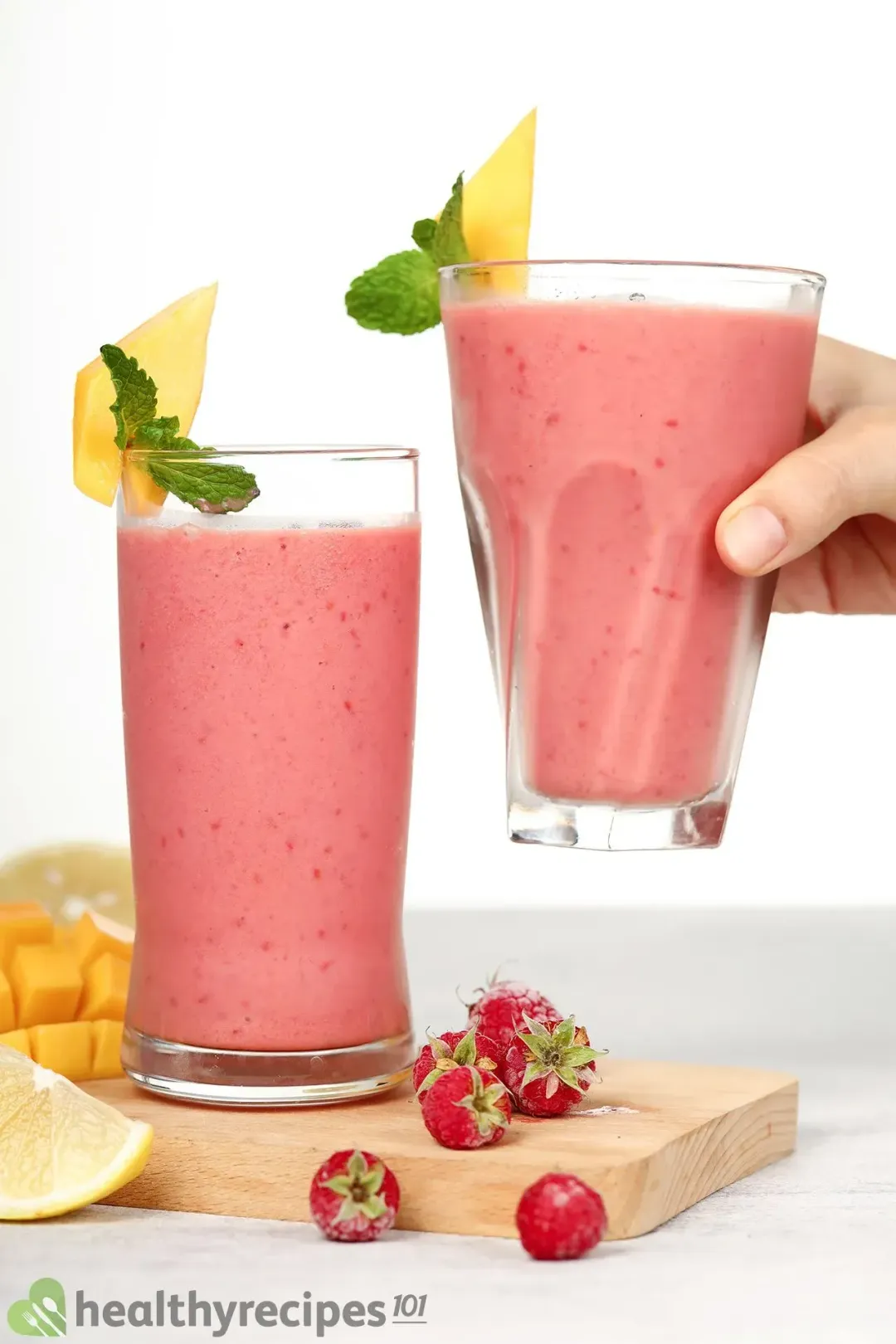
We suggest that you drink your smoothie within 24 hours to guarantee food safety. To prevent oxidation and deterioration, put any leftovers into a sealed container and put it in the fridge right away. A mason jar or bottle with a tight-fitting lid does the trick quite well.
If you’re feeling creative, you may freeze the smoothie to enjoy as a nutritious substitute for ice cream. It should stay good for two to three weeks in the freezer.
Mango Raspberry Smoothie Recipe
Here is our mango raspberry smoothie recipe. It's a refreshing and healthy beverage to enjoy over the summer. Let's begin.
- prep TIME 10 mins
- total TIME 10 mins
- COURSE Beverage, Smoothie
- CUISINE Global
- SERVINGS servings
- CALORIES 163 kcal
INGREDIENTS
- 12 oz mangoes (peeled, pit removed, cut into chunks)
- 8 oz raspberries (frozen)
- 3 tbsp honey (optional)
- 1 tsp lemon juice
- 1 tbsp chia seeds
- 1/2 cup whole milk
- 8 mint leaves (divided)
- 2 cups ice
INSTRUCTIONS
Combine all the ingredients: Into a blender, place 2 cups ice, 12 oz mangoes, 8 oz frozen raspberries, honey (no more than 3 tbsp), 1 tsp lemon juice, 1 tbsp chia seeds, 1/2 cup whole milk, and 4 mint leaves.
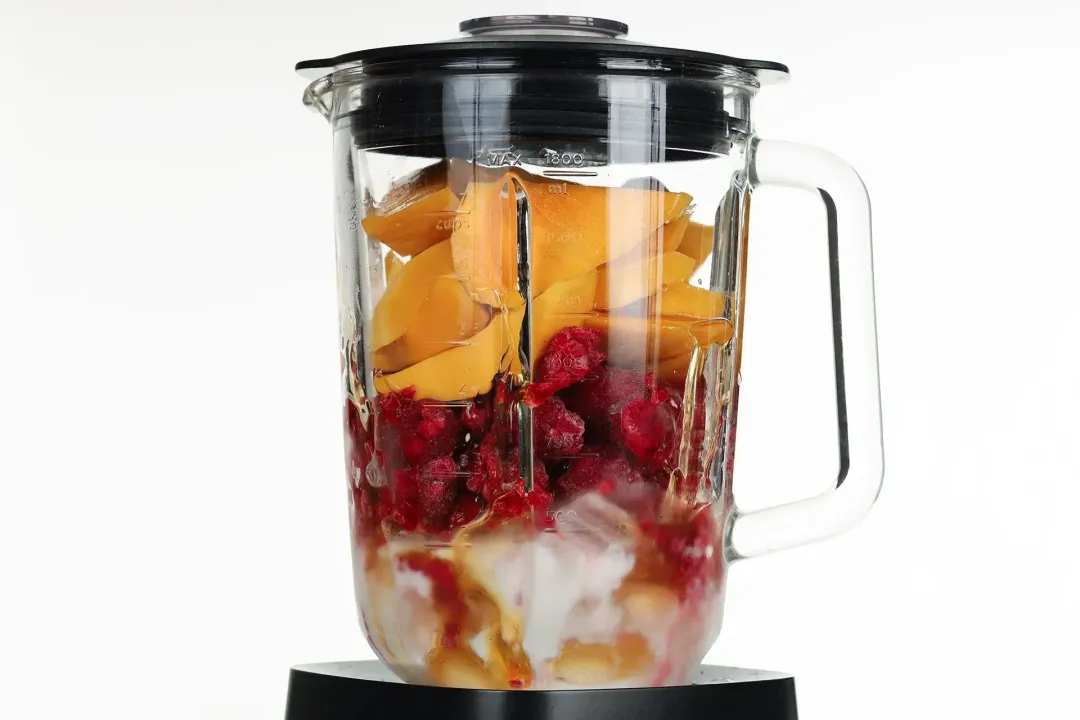
Blend in 30 seconds until smooth.
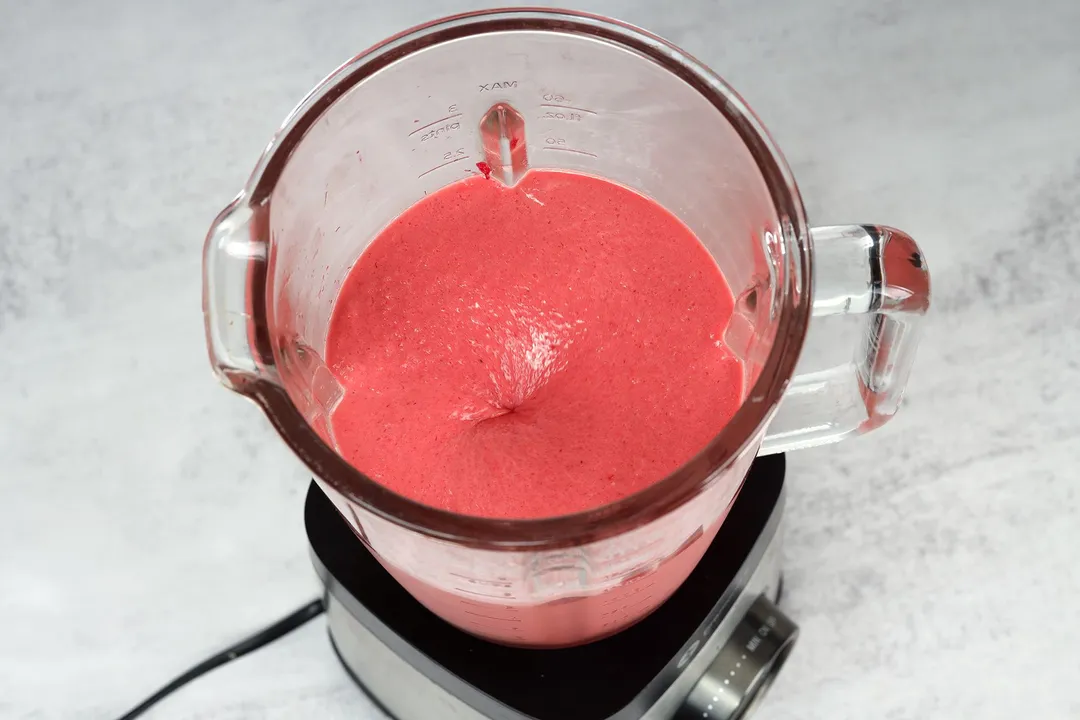
Pour into serving glasses.
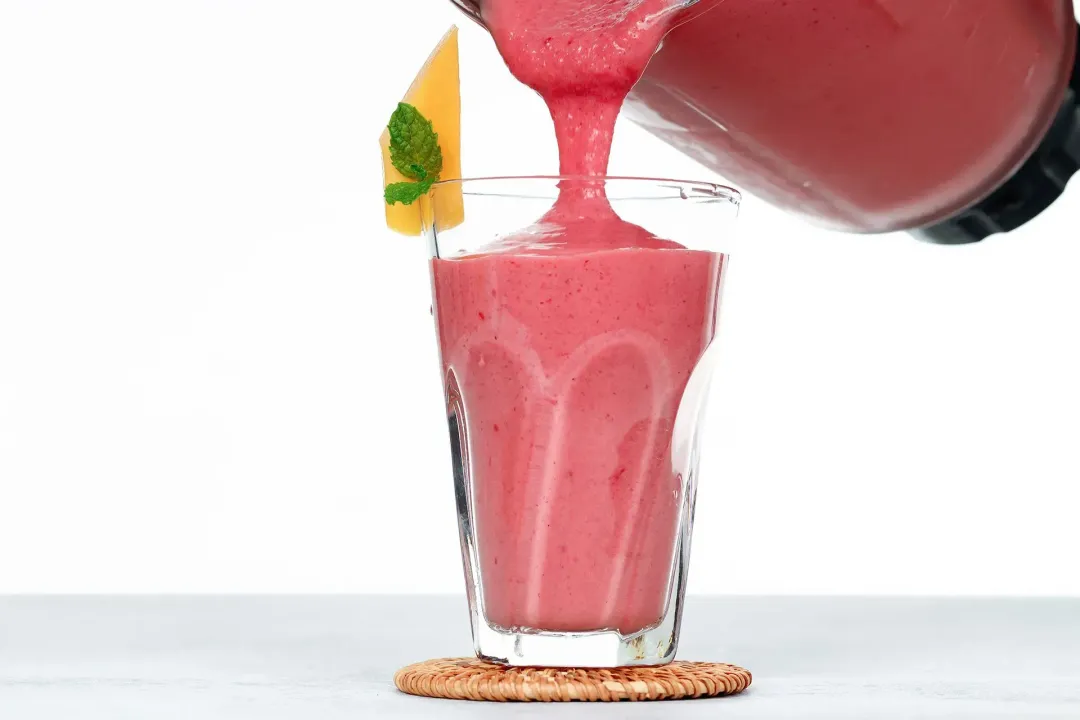
Garnish and serve: Divide the smoothie equally between four glasses. Garnish with the remaining 4 mint leaves and enjoy.
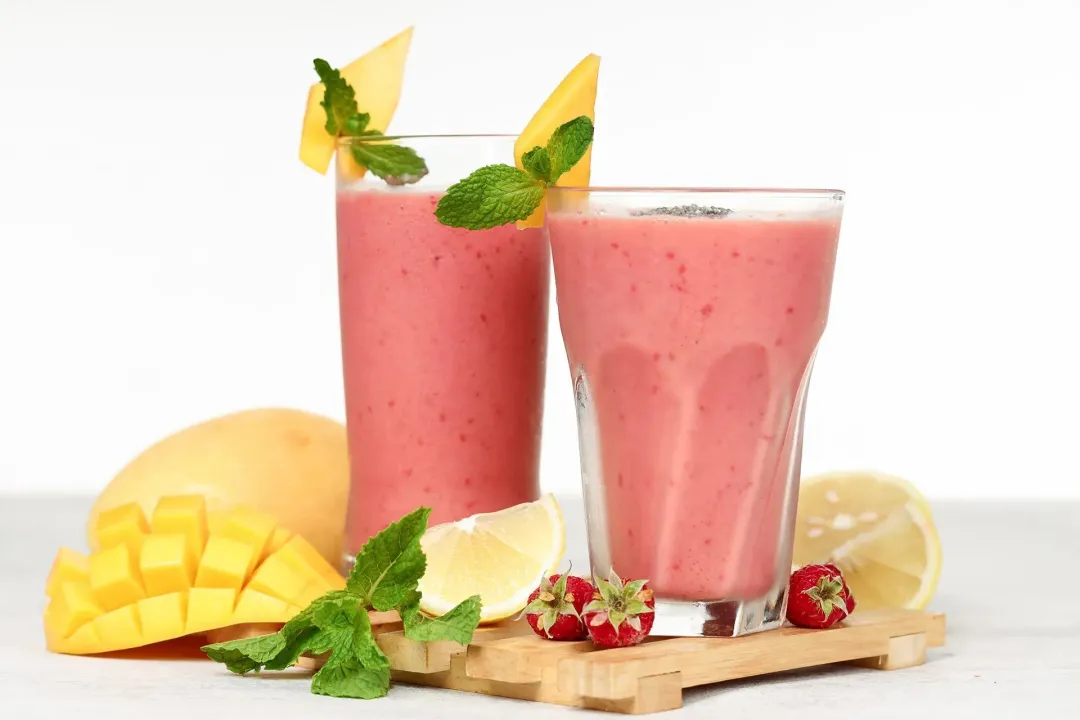
NUTRITION
Tuyet Pham
Head Chef, Culinary ConsultantLuna Regina
Writer, AuthorEmily Rogers, MPH, RDN
Nutrition Reviewer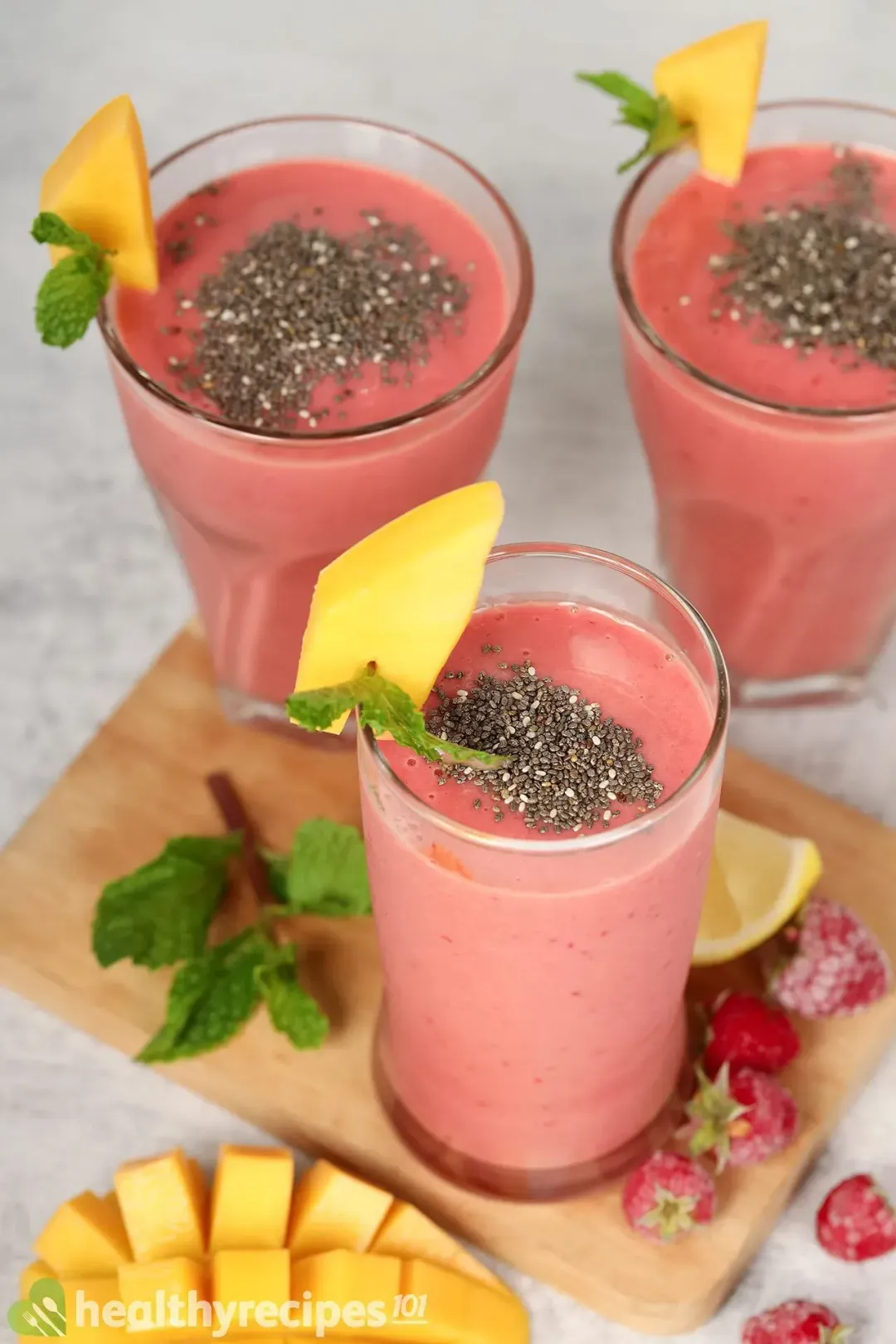
- Vee C.A sweet and creamy smoothie made with mango and raspberries.
